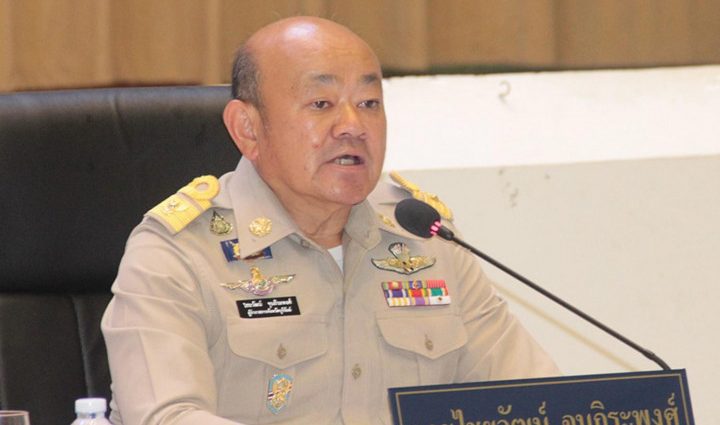159 hotspots linked to surge in fine dust

Thirty provinces, including Bangkok, remained gripped by high levels of fine particulate matter smaller than 2.5 microns (PM2.5) yesterday as fine dust pollution intensified in many areas of the country.
According to the Geo-Informatics and Space Technology Development Agency (Gistda), the satellite-based Check Foon (dust check) air quality app showed the dust level in Samut Songkhram peaked at 84.1 microgrammes per cubic metre (µg/m³) at 8am yesterday, which surpassed the safe threshold of 50µg/m³.
Yesterday, Samut Songkhram was the only province which reached a “code red”, signifying potentially harmful air, while dust levels in most other haze-affected provinces were designated orange or unhealthy.
In Bangkok, 42 districts were in the orange category yesterday. The highest levels of fine dust were reported in Phra Khanong, Don Muang, Laksi, Bangkok Yai and Bang Na districts.
The app, which is updated hourly, also forecasted that dust volumes in many areas were set to rise from orange to red in a matter of hours based on the PM2.5 data compiled by the Pollution Control Department (PCD) and the Meteorological Department.
As of Wednesday, the Gistda data showed that 159 hotspots, blamed for a surge in fine dust, were detected across the country.
Of them, 96 occurred in agricultural areas, 19 in communities and other areas, 26 in Sor Por Kor agricultural land areas, 13 in national forest parks, four along highways and one in a forest reserve.
Most hotspots were detected in Kalasin (13), followed by Roi Et (12) and Saraburi (11).
Chaiwat Chuntirapong, director-general of the Disaster Prevention and Mitigation Department, said the air quality data collected by the PCD showed that fine dust pollution will remain concentrated in Bangkok and the surrounding provinces until Sunday due to the influence of a cold mass from the North and lack of rain.
Meanwhile, the Bangkok Metropolitan Administration (BMA) will launch a pilot project to plant trees along the busy Ratchadaphisek Road, where traffic clogs up during most hours of the day, in a bid to spruce up its landscape and reduce the fine dust problem.
Chatree Wattanakhajorn, the deputy city clerk, chaired a meeting yesterday to discuss ways of improving the landscape along Ratchadaphisek Road. In attendance were representatives from agencies including the BMA’s Environment Department.
He said the meeting looked into what trees are best suited to help filter dust along the road and outlined traffic management design and operations with the safety and care of pedestrians in mind.
The agencies concerned will work with King Mongkut’s University of Technology Thonburi to scout suitable trees for planting along the road. The plan will initially be carried out from the Rama IX Intersection to Wong Sawang Intersection in Din Daeng, Huai Khwang, Chatuchak and Bang Sue districts.
If it proves a success, it will be expanded to other roads in the city, Mr Chatree said.

